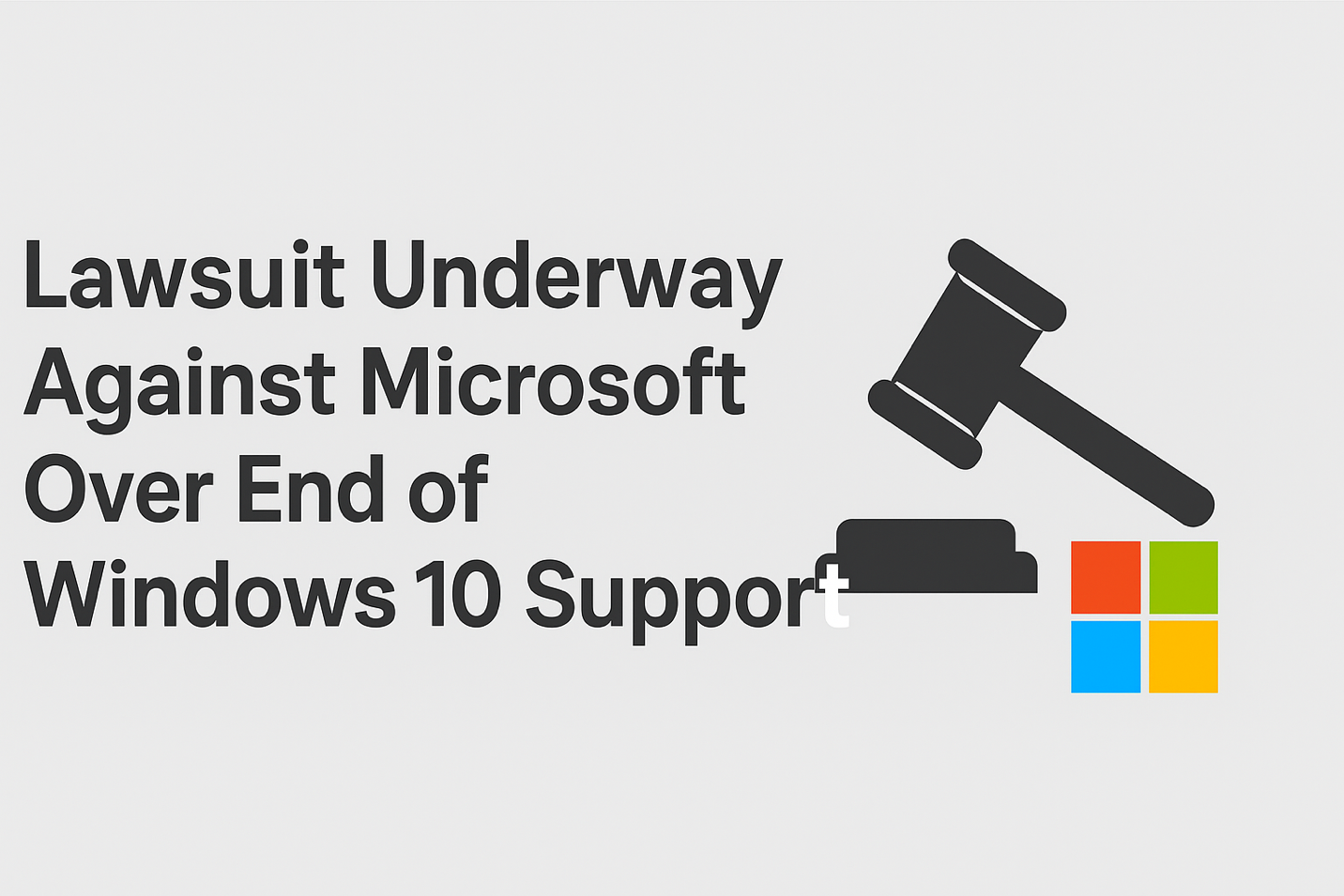Lawsuit Underway

Microsoft’s decision to officially retire Windows 10 on October 14, 2025 has sparked heated debate — and now, a lawsuit. Filed in California earlier this month, the case argues that the company is unfairly forcing users to upgrade or replace their devices, raising questions about consumer rights, competition, and the future of operating system lifecycles.
End of Support Approaches
When Microsoft ends support for Windows 10, it won’t stop running, but it will stop receiving security updates. For millions of users — from casual PC owners to businesses handling sensitive data — this leaves three options:
• Upgrade to Windows 11 (if their hardware qualifies),
• Pay for Extended Security Updates (ESU) or get it free if they qualify
• Or continue using Windows 10 at their own risk.
While Microsoft positions this as part of its normal product lifecycle, critics argue the company is leaving too many users in a vulnerable position.
Technical Support Could Continue
One of the lawsuit’s central points is that Microsoft can technically keep Windows 10 secure — and in fact, already does for certain editions. For example, Windows 10 IoT Enterprise LTSC 2021 will continue receiving security patches until January 13, 2032. This proves that support isn’t about technical limitations, but business decisions.
Microsoft, however, limits access to this edition through licensing, effectively keeping most users from benefiting. Observers like technology blogger Günter Born have pointed out that this strategy feels more like a push to Windows 11 adoption than a true technical necessity.
Allegations of Competition Distortion
The lawsuit, brought by California resident Lawrence Klein on August 7, 2025, accuses Microsoft of deliberately making Windows 10 unattractive to drive adoption of Windows 11 — and, by extension, new hardware.
The complaint highlights that Windows 11’s full functionality is increasingly tied to AI-powered features requiring Neural Processing Units (NPUs). That means users with otherwise capable older machines may be forced into purchasing new devices.
According to filings reported by Courthouse News Service, this strategy may violate California’s unfair competition and consumer protection laws.
Risks for Users and Businesses
Without continued free updates, users and businesses could face heightened cybersecurity risks. Attackers often target unsupported systems, and many organizations are reluctant — or financially unable — to replace fleets of still-functional hardware on Microsoft’s timeline.
The plaintiff argues that Microsoft should continue free security updates until Windows 10’s global market share drops below 10%, ensuring users aren’t left exposed prematurely.
What’s at Stake
This case isn’t just about Windows 10. It touches on larger questions about how tech giants manage product lifecycles and the balance between innovation, profit, and consumer rights.
If successful, the lawsuit could set a precedent requiring companies like Microsoft to maintain longer support timelines — or at least offer security updates without extra costs. If dismissed, it may reinforce the industry’s current model: rapid forced upgrades tied to new hardware cycles.
Either way, the outcome will likely influence not only the future of Windows, but also how other software makers approach end-of-life support.